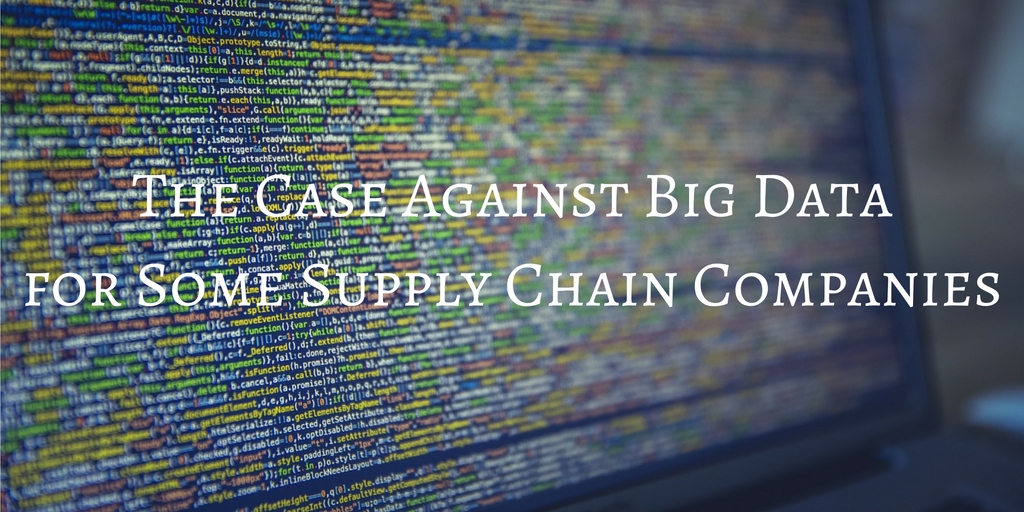While the temptation to invest in big data may be strong, small and mid-sized companies might be better off starting with small, more manageable analytics.
Big data has become a big business. A 2016 Forrester report forecasts that the big-data management business will grow by 12.8% by 2021. It’s easy to see why, with the prevalence of stories from brands like Wamart and Rolls Royce that have perfected the science of capitalizing on detailed insights about customer behavior.
But many organizations — particularly small to mid-sized companies — are learning that big data does not always equate to big payoffs. In fact, many organizations have sunk millions of dollars into sophisticated data-analytics software only to realize they don’t have the capabilities to interpret the new insights nor the expertise to turn them into a competitive advantage.
Big data and the supply chain
Companies within the logistics and supply chain industries aren’t immune to this trend. An Accenture survey of more than 1,000 supply chain executives found that 84% have already employed big-data analytics or are in the latter stages of planning to do so. Respondents reported:
- 17% have implemented analytics in one or more supply chain functions.
- Three out of 10 have an active initiative to implement analytics in 6-12 months.
- More than one-third (37%) were engaged in serious conversations about implementation.
The promising applications of big data and how it might “revolutionize” the supply chain are hard to ignore. Increased efficiency across the supply chain, improved forecasting, better cost control, more accurate inventory planning: the list of benefits go on and on. These could lead to a significant advantage for companies with the expertise, structure, and knowledge to collect, analyze, and draw strategy cues from large sets of raw data.
But, again, small and mid-sized companies usually aren’t well positioned to do so, unfortunately.
Instead, start small
Supply chain and logistics organizations that don’t have such capabilities — or the capital to invest in technology that can do it for them — should start small instead. Even if you eventually want to implement a big-data strategy, there is a long-term benefit to gleaning insight from small data sets in the interim.
Here are some steps for getting started:
1) Determine your goals
Consider your business objectives and how you can leverage data to further your goals. Focus on just one or two areas for improvement, and clearly articulate what kinds of data you want to collect as they relate to those objectives.
2) Identify your sources
From where will you collect your data? Analyzing numerous data sets from a variety of sources will leave your head spinning and you none the wiser. Also determine which metrics will be most helpful to you, and which you can set aside.
3) Pick your people
If your company doesn’t have in-house analytics expertise, work to attract the appropriate talent. Regardless, integration and structuring of analytic personnel positions will be a more significant factor in your success than your use of even the most advanced statistical software program.
4) Master reporting
Finally, spend some time determining how your findings should be presented. You’ll want them to be formatted in a clear, digestible manner with a clear application for how they will improve your business.
Related posts:
- Big Data and Supply Chain Management
- Drowning in Big Data, Parched for Information
- Using Big Data to Solve Problems
- The Only Data Worth Tracking

